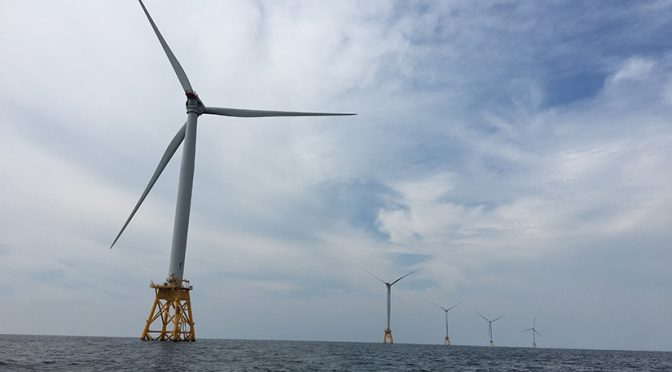The cancellation of two offshore wind projects in New Jersey has created a significant setback for the nascent US offshore wind industry. Danish wind energy developer Ørsted cited issues with supply chains, higher interest rates and a failure to obtain desired tax credits as reasons for scrapping its Ocean Wind I and II projects. These cancellations, combined with the cancellation of three projects in New England, put nearly a fifth of President Joe Biden’s goal of 30 gigawatts of offshore wind by 2030 in jeopardy.
However, despite these setbacks, the US offshore wind industry continues to move forward. New York State’s recent investments and the Department of the Interior’s approval of the nation’s largest offshore wind farm in Virginia demonstrate the continued commitment to renewable energy. Additionally, the Interior Bureau of Ocean Energy Management has announced new offshore wind leasing areas in the Gulf of Mexico.
While it may be challenging to reach the goal of 30 gigawatts by 2030, industry experts believe that a significant amount of offshore wind, around 20 to 22 gigawatts, is still achievable within that time frame. This would be a substantial increase over the current capacity of just two small demonstration projects.
Offshore wind farms play a crucial role in the United States’ plans to shift toward renewable energy, particularly in the densely populated states on the East Coast. These states have offshore wind mandates that commit them to adding more than 45 gigawatts of capacity. However, the offshore wind industry is currently facing economic challenges such as high inflation, supply chain disruptions, and increased costs of capital and construction materials.
Despite these challenges, industry leaders remain hopeful for the future. Reducing the cost of offshore wind energy in the United States is a crucial step toward making it more affordable and accessible. The first large-scale offshore wind farms in the United States have faced unexpected cost increases, with developers recognizing the need to go through a learning curve similar to Europe’s experience.
Investments and commitments from multiple states, along with ongoing technological advancements, demonstrate that the U.S. offshore wind industry is on an upward trajectory. While there may be delays and challenges along the way, the ultimate goal of achieving a cleaner, more sustainable energy future is within reach.
Frequently asked questions (FAQ):
- What is offshore wind energy?
Offshore wind energy refers to the generation of electricity from wind turbines located in bodies of water, usually the ocean. These wind farms harness the power of offshore winds to produce clean, renewable energy.
- What are the challenges facing the US offshore wind industry?
The US offshore wind industry faces challenges such as supply chain disruptions, higher interest rates and the need for tax credits. Additionally, high costs of capital and construction materials, as well as inflation, make projects more expensive and financially challenging.
- What are the benefits of offshore wind energy?
Offshore wind energy helps diversify the energy mix, reduces dependence on fossil fuels and contributes to the fight against climate change. It creates job opportunities, strengthens the electric grid, and provides a clean energy resource for American homes and businesses.
- Is the United States on track to meet its offshore wind energy goals?
While there have been setbacks and challenges, the United States is making progress toward its offshore wind energy goals. Industry experts believe achieving 30 gigawatts of offshore wind by 2030 may be ambitious, but a significant increase in capacity is still possible.
- Which states have offshore wind mandates?
Eight East Coast states, including New York, New Jersey and Massachusetts, have offshore wind mandates that commit them to adding more than 45 gigawatts of offshore wind capacity.
- How does offshore wind contribute to a cleaner energy future?
Offshore wind farms produce clean, renewable energy, reducing greenhouse gas emissions and pollution associated with power plants that burn fossil fuels. By transitioning to offshore wind energy, we can improve the quality.


